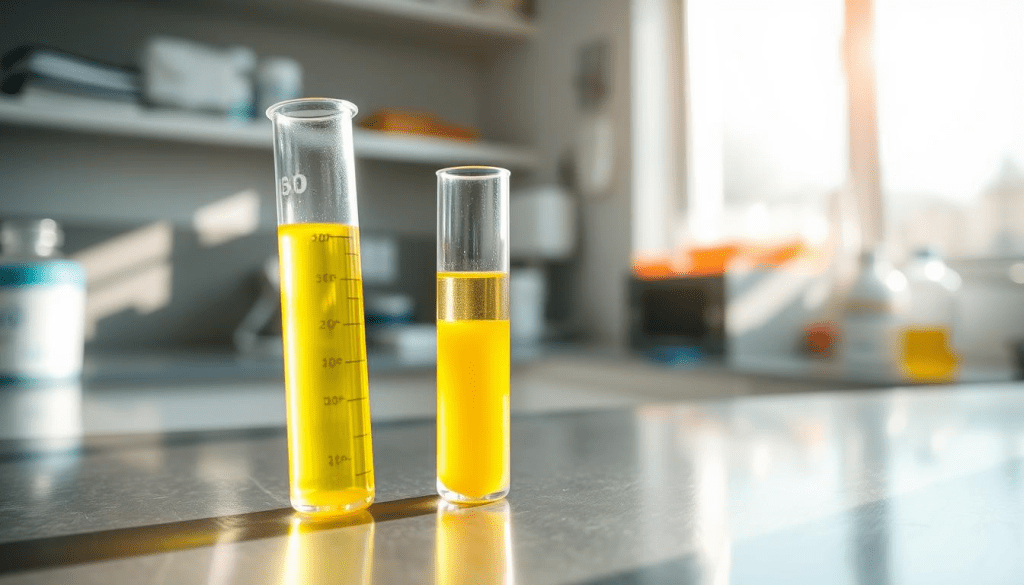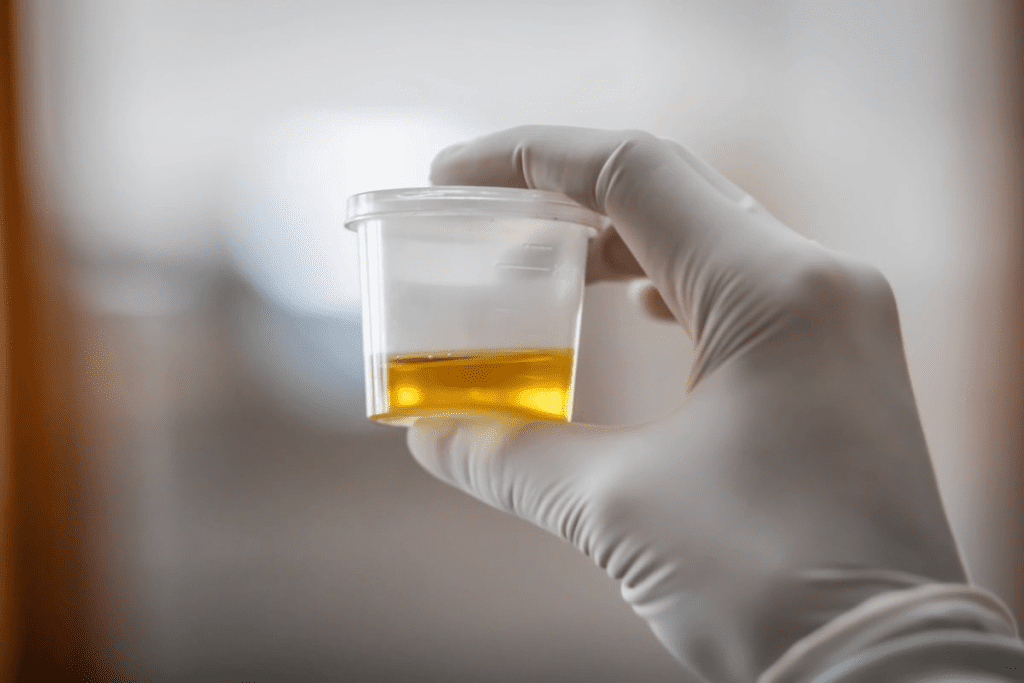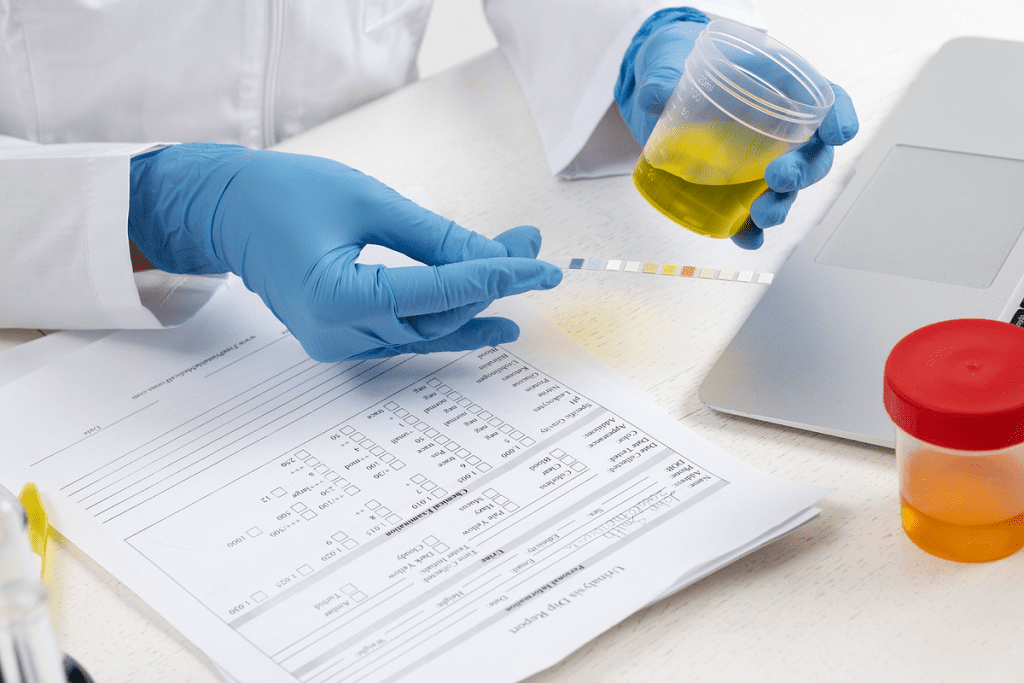Last Updated on November 25, 2025 by
How long do urinalysis results take? From leukocyte esterase dipstick to culture, learn the crucial, powerful timeframes for getting your test results back.
At Liv Hospital, we know patients often ask about urinalysis results. They want to know how long it takes, mainly for leukocyte esterase tests. These tests show if there are white blood cells in the urine.

Urinalysis results usually come in 24 to 48 hours for basic tests. But, quick tests can give results in just 1 hour. To get these results, a clean urine sample is collected. Then, it’s checked by eye, with a dipstick, and under a microscope.
Knowing when you’ll get urinalysis results is key. It helps doctors and patients plan the next steps. We stress the need for quick and correct test results.
Knowing when you’ll get urinalysis results is key to good patient care. Urinalysis helps check health and guides treatment. It’s a common tool in medicine.
Urinalysis tests urine’s physical, chemical, and microscopic properties. It checks the specific gravity of urine, showing urine concentration and hydration. This helps see how well the kidneys work.
“Urine specific gravity is a key measure,” doctors say. “It shows if the kidneys can concentrate or dilute urine.” Basic tests include dipstick checks for pH, protein, and leukocyte esterase.

Standard urinalysis results take 24 to 48 hours. But there are quick tests for some analyses. These tests give fast insights, helping doctors act quickly.
Some labs offer rapid tests that give results in hours. Waiting too long can affect test accuracy. So, quick tests are good for urgent cases.
The specific gravity of urine shows hydration and kidney function. Knowing when results come helps doctors care for patients better.
Knowing what urinalysis tests for is key to treating health issues. Urinalysis checks many parts of urine to see how well a person is doing. We’ll look at important parts like leukocyte esterase, white blood cells, nitrite, specific gravity, and clarity. Each one tells us something about a person’s health.
Leukocyte esterase is an enzyme from white blood cells. It shows up in urine when there’s infection or inflammation in the urinary tract. Finding leukocyte esterase means the body is fighting an infection. This test is quick, helping doctors act fast.
Key points about leukocyte esterase:
White blood cells and nitrite in urine are big signs of urinary tract health. White blood cells show the body is fighting off an infection. Nitrite shows bacterial infection because many bacteria can change nitrate to nitrite.
Testing timeframes for white blood cells and nitrite:
A Urologist says, “Nitrite in urine often means urinary tract infections. Many bacteria can turn nitrate to nitrite.” This shows how important nitrite testing is for diagnosing infections.
Specific gravity shows urine concentration, telling us about hydration and kidney function. Clarity shows how clear urine is, affected by cells, bacteria, or other substances.
Measurement times for specific gravity and clarity:

Understanding these components and their testing times helps doctors make better decisions. We aim to help patients grasp the parts of urinalysis and what they mean for health.
In the world of urinalysis, specialized tests are key for accurate diagnoses and treatment plans. These advanced tests give vital information that greatly affects patient care.
Microscopic analysis is a vital part of urinalysis. It lets us look at epithelial cells in urine. Finding these cells can show health problems like infections or urinary tract damage. This test involves looking at the urine sample under a microscope to count and identify different cells.
The time needed for microscopic analysis varies. It depends on the lab and the test’s specifics. Usually, it’s done within a few hours to a day after the sample arrives. Quick analysis is key for getting accurate results.
Confirmatory testing is a vital step in urinalysis. It gives more precise and detailed results than initial tests. Tests like gas chromatography-mass spectrometry are used to confirm certain substances or infections. The time for confirmatory testing can be from a few days to over a week. This depends on the test’s complexity and the lab’s protocols.
Knowing the clarity definition in urinalysis is also key. Clarity means how clear or transparent the urine sample is. It can be affected by substances like cells, bacteria, or other contaminants.
| Test Type | Typical Timeframe | Factors Influencing Timeframe |
| Microscopic Analysis | Several hours to 1 day | Laboratory workload, test complexity |
| Confirmatory Testing | 2-7 days or more | Test complexity, laboratory protocols |
Urinalysis detection windows are key for both medical and legal uses. They help us understand how long substances stay in urine. This can range from a few hours for alcohol to weeks or months for drugs.
Alcohol shows up in urine for just a few hours, usually 7 to 12 hours after drinking. Alcohol detection is important in many areas. Other short-term substances include some medicines and illegal drugs.
Some drugs stay in urine for a few days to two weeks. This includes many drugs and their byproducts. For example, stimulants and cannabinoids can be found in this time frame.
Cannabis can be found in urine for months, sometimes up to 12 weeks. This is more common in heavy users.
Medical News Today points out, “The time substances can be found in urine varies. Alcohol is detected for a shorter time than drugs like cannabis.”
“Finding drugs in urine is complex. It depends on the drug, how much was used, how often, and the person’s metabolism.”
Medical News Today
| Substance | Detection Window |
| Alcohol | 7-12 hours |
| Cannabis (single use) | 3-7 days |
| Cannabis (chronic use) | Up to 12 weeks |
Getting urinalysis results quickly and accurately is key to good patient care. At Liv Hospital, we follow the latest medical guidelines for fast and right treatment. Knowing what urinalysis tests show helps doctors make better choices.
We work hard to give our patients the best urinalysis results fast. This is part of our promise to offer top-notch care. Using the newest medical tools and knowledge helps us keep our patients healthy.
Thanks to new urinalysis tests, we can give our patients detailed and correct diagnoses. This helps us plan treatments that work well and improve their health.
At Liv Hospital, you usually get urinalysis results in 24 to 48 hours. But, rapid tests can give you results in just an hour.
Leukocyte esterase is an enzyme that shows white blood cells are present. This could mean there’s an infection or inflammation.
Other important tests include nitrite levels and specific gravity. Nitrite shows if bacteria are there, and specific gravity checks urine concentration.
Yes, you can get same-day or rapid tests for some analyses. This means you can get quick insights into your health.
Specialized tests like microscopic analysis take different times. Knowing these times helps doctors make better decisions.
The time substances stay detectable in urine varies. Alcohol is detectable for a few hours, while some drugs can be found for weeks or months.
Specific gravity shows urine concentration. It tells us about a patient’s hydration and kidney function.
Clarity shows how clear or cloudy the urine is. It can hint at health issues if it’s not normal.
Urinalysis can find leukocyte esterase, which means white blood cells are there. But to see white blood cells directly, you need microscopic analysis.
Nitrite levels in urine can show that certain bacteria are present. This helps diagnose urinary tract infections.
Subscribe to our e-newsletter to stay informed about the latest innovations in the world of health and exclusive offers!